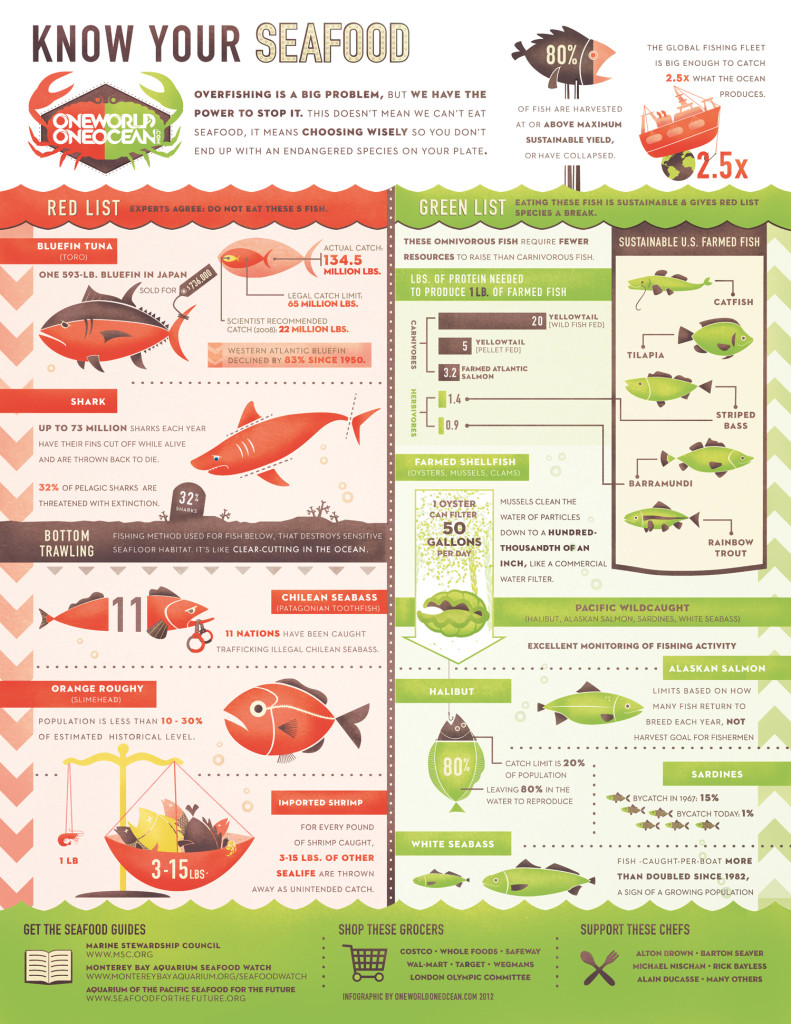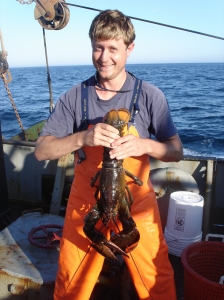With the holidays right around the corner there will no doubt be plenty of indulgences. It is important to keep in mind that seafood can also be considered an extravagance if you’re choosing an unsustainable option to serve or taste. Did you know that the global fishing fleet can catch up to two and a half times what the ocean produces? 80% of fish stocks are harvested at or above maximum sustainable yield? Check out this infographic by One World One Ocean that was released last month for National Seafood Month for those facts and a whole lot more, including 1) fish on the red list (not good) and green list (good), 2) reasons why these fish are on these lists, 3) chefs and grocers to support, and 4) important guides to download.

From ‘One World One Ocean’
Indian food is everywhere. You go to any corner of the world and you’ll find an Indian Restaurant serving the taste of India. Moreover, Indian Food is heartily welcomed and loved by everyone. But very few know that Indian food offers more benefits to your health than satisfy your appetite. Tamarind Cuisine provides the best Indian Fine Dining in Orlando.
Very often people think of Indian food as a hot, spicy, full of gravy and heavy food which is good for the taste buds but not for the health. But that’s not true, in fact, Indian Food can be the most healthy food one can ever have considering all those fresh vegetables and authentic spices added in the dishes. All these authentic spices used in Indian food are in fact very important for your health. Most of us might haven’t noticed this yet but that’s true and to understand more, let’s dive deep and know more about the Indian Cuisine:
- Most of the Indian Cuisine recipes include the most refreshing array of vegetables and fruit cooked in different ways that help retain their freshness and nutrients. A lot of cooking processes practiced in other parts of the world tend to cause these refreshing vegetables and fruits to lose their nutrients and other health benefits but this is not the case with Indian Food. It allows you to enjoy their health benefits in a more enjoyable way than their original form.
- It always uses fresh ingredients. It also involves making dishes from scratch leaving less space for the use of preservatives and artificial ingredients. This makes the Indian Food way far healthier.
- Indian Cuisine widely uses spices like turmeric, Ajwain, ginger, garlic, cardamom, and green chilies. All of them have some or other medicinal and healing properties, which are very beneficial for your health. The spices used to make the Indian Food are not just offering some savory taste but also are actually good for the health.
- Authentic Indian meals are abundant carbohydrates, proteins, fats, and fibers, which are highly needed for a balanced diet and a healthier life.
- Another reason why Indian Food is so important for your health is the use of yogurts and other dairy products. These are often used in Indian food and many dishes are made from fermented milk, which keeps the digestive tract healthy. They also come with lots of calcium, which means eating them regularly can help you have healthier bones and overall body fitness.
There is more to Indian food and if you might think to explore the delicious and savory Indian Food Orlando, then Tamarind is your only destination that offers the best and authentic Indian Food in Orlando, Florida.
About Tamarind
Here at Tamarind, we bring a part of India to you through its rich and selective variety of food. Our tailor-made Menu is created to suit the plates of all our customers and will also give them an authentic taste of some of India’s most popular regional dishes. We try to serve you the true taste of North Indian food and South Indian Food. Our customers are passionate about food and we took into account their views — how they look for comfort food and seek flavors of best home-cooked meals. We have our restaurants in Orlando and Winter Park. We are happy to serve the best and the most authentic and the best Indian food in Long Beach. Come & Rejuvenate!!!










What people are saying …